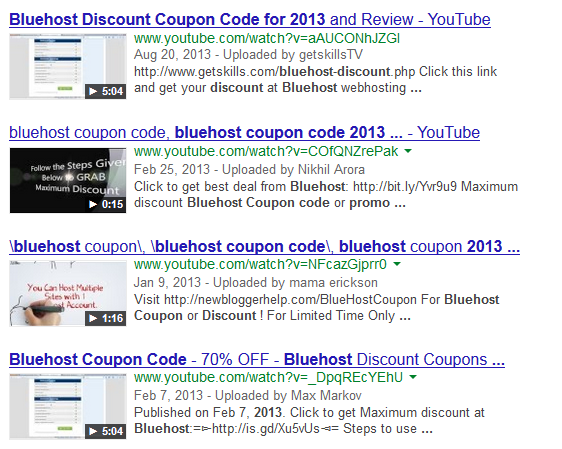If you want to drive consistent traffic to your site through search engines, it helps to understand weaknesses in Google’s algorithm that are easier to attack. Much like the Moneyball Oakland A’s of the early 2000s, we have to look at what ranking signals Google is placing a lot of weight on and see which ones are easy to exploit that can result in significant rankings boosts. The Oakland A’s found market inefficiencies…we’re looking for algorithm inefficiencies.
I get to work with dozens of sites every day at work so I keep pretty good tabs on what is moving in the search engine results pages and what people are doing to push the needle online. Here’s a list of things I am seeing right now that you can easily do to take advantage of some of Google’s new ranking signals. I’ve tested most of these but there are plenty of examples in here to help you figure out what to do.
Overvaluing fresh content
Google has pushed the importance of fresh content more with every algorithm update the past few years. On the surface it makes sense. It’s a fast paced world (especially online) and newly published content is likely to have more updated information thus it should rank higher. Google is using the post date as a ranking signal for nearly all informational queries right now. A post from 2013 is much more likely to rank higher than one from 2010. A tell tale sign that a certain query is strongly influenced by freshness signals is when you see the page date showing up prominently in the SERPs.
Here’s an example….a search for [iphone discount]:

All of the pages ranking highly for this big money keyword prominently display dates. Fresh content is always going to rule the top half of page one. Fortunately, the post date is probably the easiest thing to change. You could write a PHP script to echo the current data every day if you really wanted to get aggressive with it. A smarter strategy is to go in and update the post with an additional 100-200 words once a week and update the post date to reflect your changes. Google will crawl your page, grab the new date and see the updated content.
If you have an article or blog post ranking highly for an important keyword, this is your best bet with how well fresh content is ranking nowadays.
Using months and years as a ranking signal
This is closely tied with fresh content, but this one is even easier to exploit if you are a lazy marketer. Searches looking for new information tend to add a month or year into their query. For example, I bought pizza the other night so I was searching for coupon codes. I started with [papa johns coupon codes] but ended up trying [papa johns coupon codes october 2013] when I didn’t have any luck. Tons of users do this. You’ll see it pop up in Google suggest time and time again.
It must be so popular that Google is going to rank sites with the current year and month prominently displayed on the page even for broad, dateless queries like [papa johns coupon codes]. If you are watching any of the affiliate industries, you’ll see people adding “October 2013” or something similar to their title tags all the time.
I tested this out on a huge keyword in the online marketing industry for a resource page that has been on page 1 – 2 for several years. My page was first published several years ago and has hung around on the back half of page 1 and the top of page 2. It hasn’t been updated for a while. I went in and made only one change: adding 2013 to the end of the title tag.
Here’s the result:

It ended up on the top half of page 1 for a couple of head keywords and started pushing long tail traffic like never before into the page. Again, this impact informational and research queries very heavily.
Too much emphasis on domain-level metrics
This isn’t new per-say, but Google continues to place way too much stock on the overall value and trust of a domain and allows really awful content to rank highly if it is hosted on an ‘important’ site.
If you are going after a long tail keyword that isn’t competitive, you can have several listings on page 1 in a couple of days if you create a 20 slide presentation optimized for your keyword, upload to Slideshare, export to PDF & upload to a public Google Drive presentation and turn the crappy presentation into an optimized video that gets published on YouTube.
Here are some specific examples:
This presentation hosted on Google Docs is ranking on page 1 for [seo for startups]…ahead of Moz.com and the excellent Kalzumeus.com. It certainly helps that the presentation is by a Google employee but I have used this same strategy to rank for less competitive keywords and I don’t get a paycheck from the big G. (You can see all of them for yourself here.)

Any keywords relating to Bluehost coupon codes are always good to find some people attacking Google’s weaknesses. These are all on page 1 for [bluehost discount codes for 2013] and they are all extra crappy.

My favorite is the one that is only 15 seconds long. There is no way that a video like that should be on page 1 for a big money keyword like this…but alas…it’s hosted on a Google owned property with lots of domain trust.
Here are some power sites that you can easily use to get to the top of Google quickly:
slideshare.net
youtube.com
drive.google.com
plus.google.com
————————-
By finding the utter crap that ranks highly in Google’s results, we can better understand the ineffencies in the algorithm right now. Working in some of these elements — fresh content, emphasis on published date/time, and tons of content on 3rd party power domains — you can exponentially increase your traffic from Google. The best part is that these tactics all work pretty quickly.
My advice? Find some long tail keywords that aren’t too competitive and test these out on them. You can probably start pulling some nice traffic in within a couple of weeks.